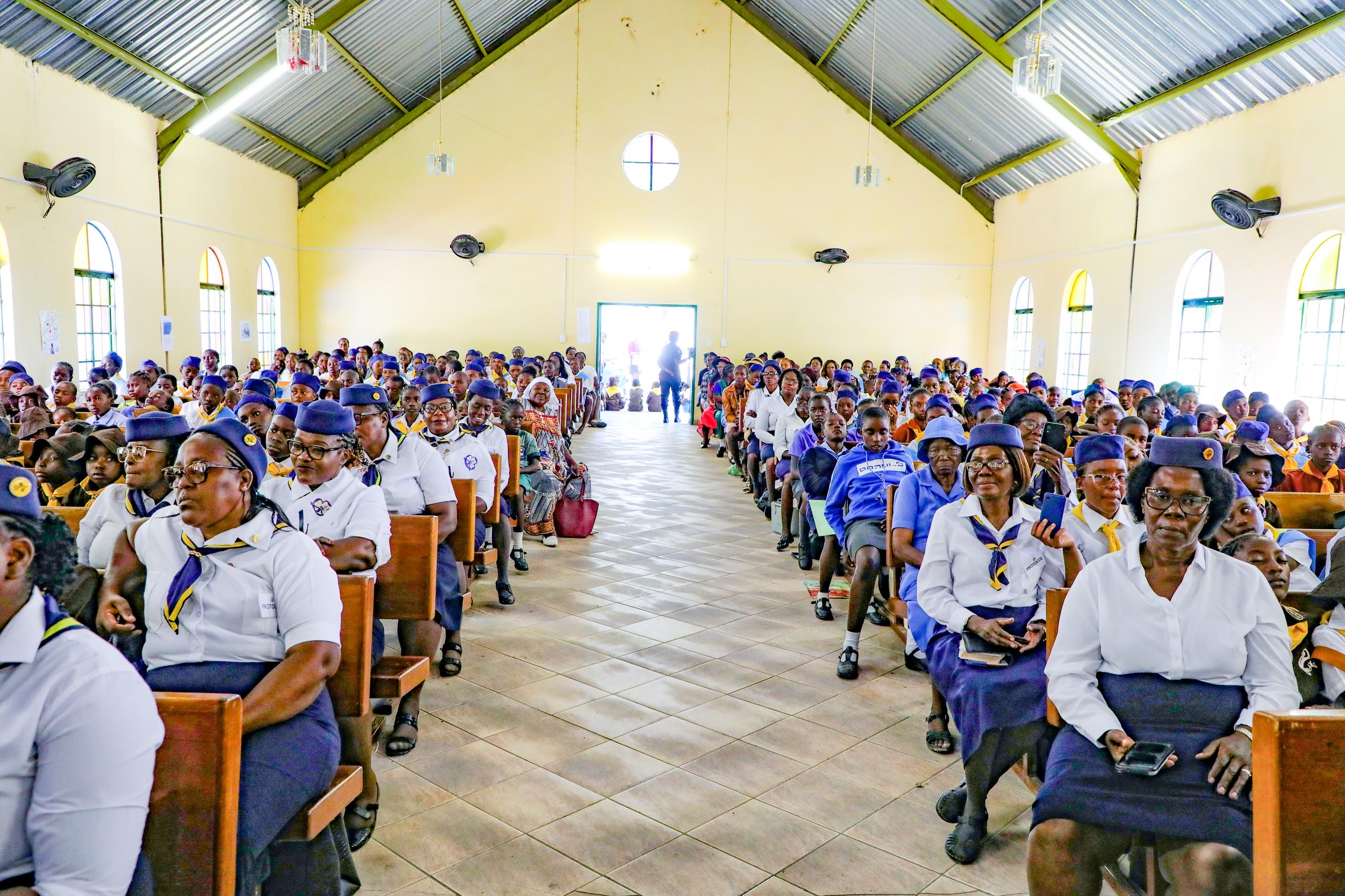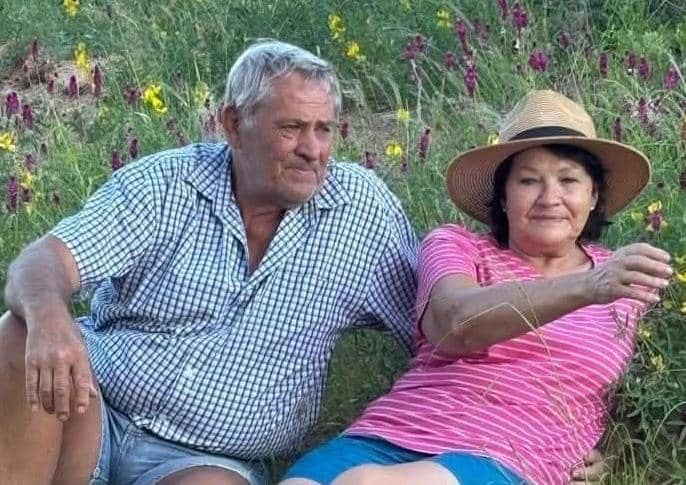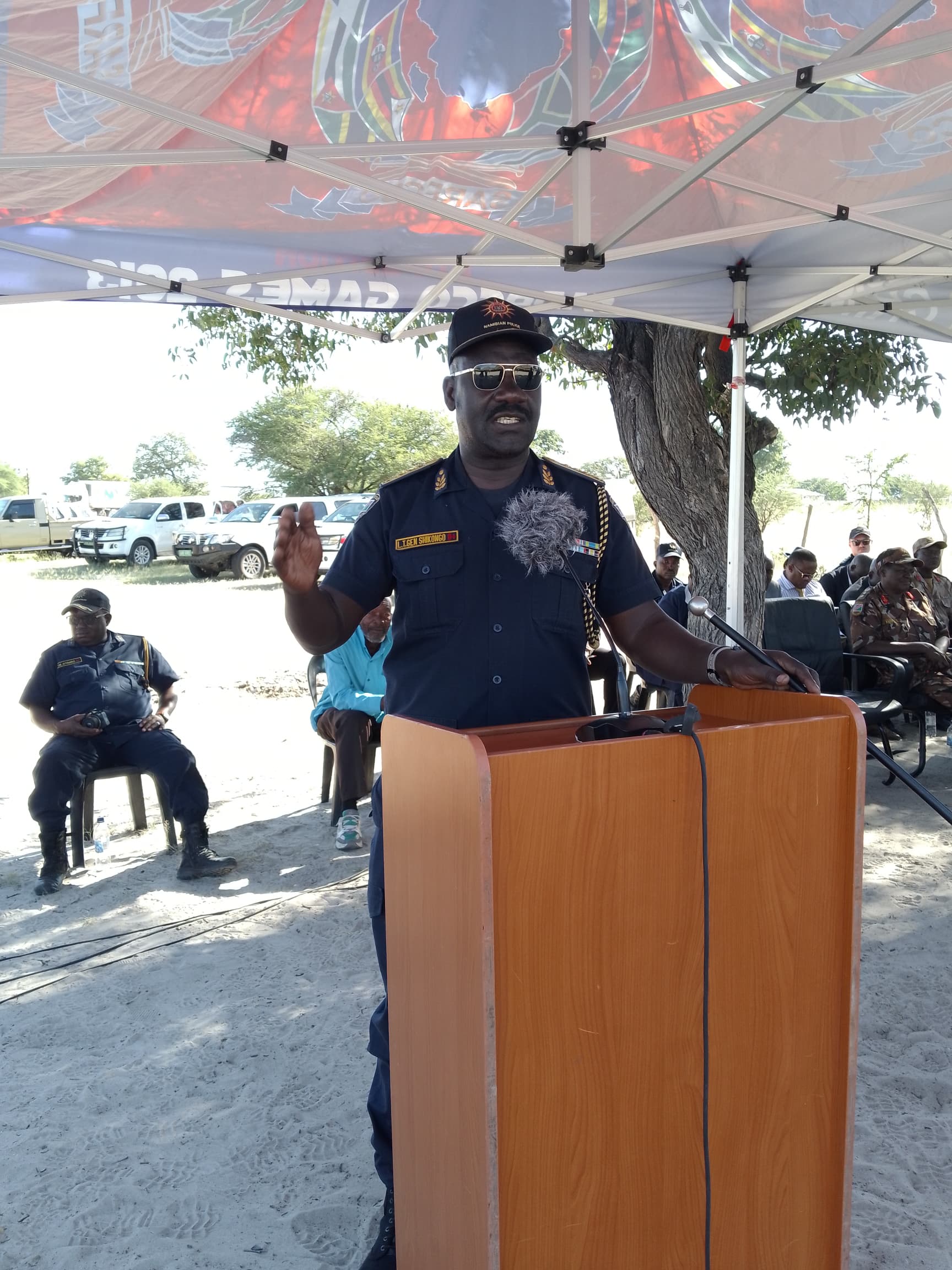EVERY breeding site of the Lesser Flamingoes in Africa needs protection as there are very few them on the continent.
This appeal was made yesterday by Charlie Paxton of the Shamvura Camp in the Kavango Region. “Their breeding places are very few in Africa and every such site needs special protection,” she said.Both she and her husband, Mark Paxton, have given their individual votes of support to the recently launched Save The Flamingo Campaign (STFC), a conservation initiative aimed at addressing threats facing Lesser Flamingoes at South Africa’s Kamfers Dam (north of Kimberly).It is one of the world’s most important flamingo sites and is home to the largest permanent population of Lesser Flamingoes in southern Africa ; it is the only Lesser Flamingo breeding site in South Africa and one of only four in Africa.The other three are Namibia’s Etosha Pan, Botswana’s Sua Pan and Tanzania’s Lake Natron.The Kamfers Dam flamingoes are threatened by the deteriorating quality of the water because of the type of sewage effluent flowing into the dam, says the STFC.During a visit to the Homevale Sewerage Works on June 25, it was found that the bulk of the plant was not operational and that some of the infrastructure had been abandoned.”A high volume of extremely poor quality (raw) sewage is currently flowing into Kamfers Dam,” says the project.It says an incredible 9 000 chicks were produced on Kamfers Dam’s artificial island this year, a massive contribution to the declining population of southern Africa’s Lesser Flamingo, estimated to number 100 000 individuals.STFC says that despite years of negotiating with Kimberly’s Municipality (the Sol Plaatje Municipality) to improve the water quality flowing into Kamfers Dam, it continues to deteriorate – with severe health implications for the flamingoes, other birds and people living in neighbouring suburbs.In February, there was a severe algal bloom at Kamfers Dam that transformed the water into “pea soup”.Fortunately, the algae was not the severely toxic Microcystis-green algae, which has been implicated in causing mass mortalities of tens of thousands of Lesser Flamingos in East Africa.STFC says some of the dam’s young Lesser Flamingoes have swollen tibio-tarsal joints and lesions on their legs, conditions which could be attributed to the dam’s water quality.These abnormalities and their causes are currently being investigated by scientists and veterinary pathologists.”If the flamingoes are being negatively affected, the poor water quality is almost certainly having a detrimental affect on the dam’s other water birds (68 different species recorded at Kamfers Dam) and other aquatic life,” says STFC People in neighbouring suburbs have at times had to endure extremely unpleasant smells when hydrogen sulphide gasses are produced by rotting algae and this affects their quality of life.One of the aims of the campaign is to encourage the Kimberly Municipality to hand over the management of the sewerage works to an independent management entity.This would ensure better management of the sewerage works, upgrading, maintenance and recommissioning of the abandoned infrastructure.This is necessary to ensure that the water is treated to prescribed Department of Water Affairs and Forestry standards, so that it is acceptable for birds and other aquatic life.Lesser Flamingoes are listed as “near threatened” in all national and international red date books.On the conservation status of Namibia’s Lesser Flamingoes, the Chief Warden Science at the Etosha Ecological Institute Wilferd Versfeld, said the conservation of the birds was made difficult by the fact that their breeding depends on flood water.So when no flood water is received, it makes it difficult for them to breed.”Apart from wetland counts twice a year and monitoring, there was nothing more we can do,” he said.Versfeld said this had led to the absence of a number of Lesser Flamingoes in the country, “as they keep on flying back to Botswana”.”Their breeding places are very few in Africa and every such site needs special protection,” she said.Both she and her husband, Mark Paxton, have given their individual votes of support to the recently launched Save The Flamingo Campaign (STFC), a conservation initiative aimed at addressing threats facing Lesser Flamingoes at South Africa’s Kamfers Dam (north of Kimberly).It is one of the world’s most important flamingo sites and is home to the largest permanent population of Lesser Flamingoes in southern Africa ; it is the only Lesser Flamingo breeding site in South Africa and one of only four in Africa.The other three are Namibia’s Etosha Pan, Botswana’s Sua Pan and Tanzania’s Lake Natron.The Kamfers Dam flamingoes are threatened by the deteriorating quality of the water because of the type of sewage effluent flowing into the dam, says the STFC.During a visit to the Homevale Sewerage Works on June 25, it was found that the bulk of the plant was not operational and that some of the infrastructure had been abandoned.”A high volume of extremely poor quality (raw) sewage is currently flowing into Kamfers Dam,” says the project.It says an incredible 9 000 chicks were produced on Kamfers Dam’s artificial island this year, a massive contribution to the declining population of southern Africa’s Lesser Flamingo, estimated to number 100 000 individuals.STFC says that despite years of negotiating with Kimberly’s Municipality (the Sol Plaatje Municipality) to improve the water quality flowing into Kamfers Dam, it continues to deteriorate – with severe health implications for the flamingoes, other birds and people living in neighbouring suburbs.In February, there was a severe algal bloom at Kamfers Dam that transformed the water into “pea soup”.Fortunately, the algae was not the severely toxic Microcystis-green algae, which has been implicated in causing mass mortalities of tens of thousands of Lesser Flamingos in East Africa.STFC says some of the dam’s young Lesser Flamingoes have swollen tibio-tarsal joints and lesions on their legs, conditions which could be attributed to the dam’s water quality.These abnormalities and their causes are currently being investigated by scientists and veterinary pathologists.”If the flamingoes are being negatively affected, the poor water quality is almost certainly having a detrimental affect on the dam’s other water birds (68 different species recorded at Kamfers Dam) and other aquatic life,” says STFC People in neighbouring suburbs have at times had to endure extremely unpleasant smells when hydrogen sulphide gasses are produced by rotting algae and this affects their quality of life.One of the aims of the campaign is to encourage the Kimberly Municipality to hand over the management of the sewerage works to an independent management entity.This would ensure better management of the sewerage works, upgrading, maintenance and recommissioning of the abandoned infrastructure.This is necessary to ensure that the water is treated to prescribed Department of Water Affairs and Forestry standards, so that it is acceptable for birds and other aquatic life.Lesser Flamingoes are listed as “near threatened” in all national and international red date books.On the conservation status of Namibia’s Lesser Flamingoes, the Chief Warden Science at the Etosha Ecological Institute Wilferd Versfeld, said the conservation of the birds was made difficult by the fact that their breeding depends on flood water.So when no flood water is received, it makes it difficult for them to breed.”Apart from wetland counts twice a year and monitoring, there was nothing more we can do,” he said.Versfeld said this had led to the absence of a number of Lesser Flamingoes in the country, “as they keep on flying back to Botswana”.
Stay informed with The Namibian – your source for credible journalism. Get in-depth reporting and opinions for
only N$85 a month. Invest in journalism, invest in democracy –
Subscribe Now!










